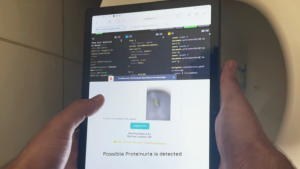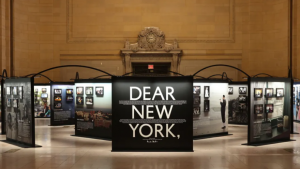The Laboratory of Food Analysis is an interactive installation that analyses nutritional supplements and diets.
The brainchild of Amsterdam-based designers Lise Lefebvre and Maxime Morel, the Laboratory of Food Analysis was created for a design competition hosted by DA Japan Architects Association with food guide publishers Zagat. Hosted in a shipping container, the laboratory was presented at the Tokyo Design Week recently and aimed to draw attention to the increasing modern preference for natural remedies.
In the shipping container-cum-pseudo-laboratory visitors became the guinea pigs as they were taken through a series of “scientific experiments” by Lefebvre and Morel, in the role of lab assistants.
After assessing each visitor Lefebvre and Morel produced a “Nutricard” specifically tailored to the nutritional health needs of the individual. These nutritional needs are based on physiological information gathered by the lab assistants. For example, someone wearing glasses and with a slightly alkaline PH in their saliva will receive a personal nutricard with a high percentage of carotene to improve eyesight and printed with citrus extract, to re-balance their PH, the duo explained.
The Nutricard consists of edible paper that has been soaked in plant extract with the text printed in vegetable. After the consultation the visitor needs to eat this card supplement, thus ingesting all the vitamins and nutrients lacking from their diet, as ascertained by the lab test.
The Laboratory of Food Analysis was meant to be a thoughtful and fun critique on some of the practices of the diet and nutritional supplement industry.















